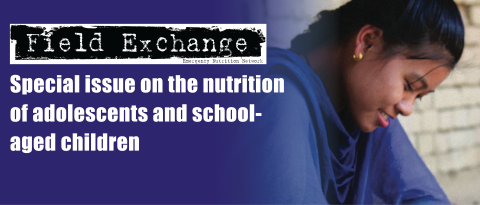Dietary intake and practices of adolescent girls in low and middle-income countries: A systematic review
This is a summary of the following paper: Keats, E.C., Rappaport, A.I., Shah, S., Oh, C., Jain, R. & Bhutta, Z.A. (2018). The Dietary Intake and Practices of Adolescent Girls in Low- and Middle-Income Countries: A Systematic Review. Nutrients, 10(12), 1978. https://doi.org/10.3390/nu10121978
Adolescents represent an important and often overlooked group in nutrition programming and, in many low- or middle-income countries (LMICs), they regularly face a double burden of malnutrition: undernutrition (stunting, wasting, micronutrient deficiencies) and overnutrition (overweight/obesity). Adolescent girls are disproportionately affected, with iron, vitamin A and iodine deficiency being particularly prevalent in this group. To summarise the dietary intakes, patterns and practices of adolescent girls, defined as those aged 10-19 years, in LMICs, a systematic review of both grey literature and academic databases was completed according to the PICO framework. This constitutes the first review to look principally at the dietary patterns of adolescent girls in a quantitative manner that would allow for more informed policy and programming initiatives targeted towards this vulnerable population.
Of the 227 articles meeting the inclusion criteria, 59% were conducted in urban populations and 78% in school settings. Studies represented LMICs across six regions: Africa (n=36), East Asia and Pacific (n=47), Europe and Central Asia (n=9), Latin America and the Caribbean (n=35), Middle East and North Africa (n=46) and South Asia (n=54).
Heterogeneity was apparent between the study methodologies. Mean energy intake was lower in rural settings (1621 ± 312kcal/day) compared to urban settings (1906 ± 507kcal/day). Self-reported daily consumption of nutritious foods was low; on average, 16% of girls consumed dairy, 46% consumed meat/fish, 44% consumed fruits and 37% consumed vegetables. By contrast, energy-dense and nutrient-poor foods were consumed four to six times per week by many, namely sweet snacks (63%), salty snacks (78%), fast foods (23%) and sugar-sweetened beverages (49%). Forty per cent of all adolescent girls reported skipping breakfast but 49% reported snacking during the day.
Despite the non-representative nature of the studies included in this review, it nevertheless highlights the dietary shift among adolescent girls residing in LMICs towards a more ‘western’ diet, filled with ultra-processed foods. It is evident that dietary habits are suboptimal within this group and that the already apparent double-burden of malnutrition is likely to become entrenched while remaining on this dietary trajectory, leading to major non-communicable disease implications in low- and middle-income settings.
Study heterogeneity within this review highlights the need for more consistent, representative nutrition data for adolescent girls to address both current data limitations and allow for comparison between studies. The authors highlight that this is especially pertinent considering the importance of good nutrition in adolescent girls, particularly those who are pregnant.


